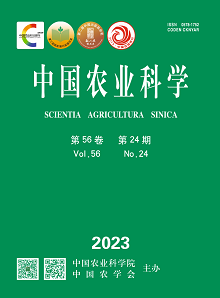【Background】Mitochondria is an important organelle in the organism, which is the primary site for cellular oxygen consumption and the production of the energy substance adenosine triphosphate (ATP), playing a significant role in the organism’s resistance to adversity. The rusty grain beetle (Cryptolestes ferrugineus) is a type of global stored grain pest, possessing extremely strong environmental adaptability.【Objective】The objective of this study is to analyze the respiratory rate of C. ferrugineus and the response of mitochondrial protein-coding genes to different environmental stresses, and to investigate the stress response of mitochondria in the adversity resistance of C. ferrugineus.【Method】Mitochondrial protein-coding genes were identified based on the mitochondrial genome data of C. ferrugineus, and corresponding real-time fluorescence quantitative PCR (RT-qPCR) primers were designed. The toxicity regression equation and LC30 of C. ferrugineus to fumigants (ethyl formate), botanical insecticides (rotenone), and stored grain protectants (avermectin) were determined by using bioassay methods, and these concentrations were used for subsequent drug stress treatment on the test insects. The spatial and temporal expression patterns (different developmental stages and different tissues of larvae) of mitochondrial protein-coding genes in C. ferrugineus were analyzed by using RT-qPCR technology. Finally, the changes in the respiratory rate of C. ferrugineus under various adversity stresses such as high temperatures (35 and 40 ℃), ethyl formate, rotenone, avermectin, and starvation, as well as the expression patterns of mitochondrial protein-coding genes, were studied by using a CO2 detector and RT-qPCR technology, respectively.【Result】Twelve mitochondrial protein-coding genes (excluding nad6) quantitative primers were designed. RT-qPCR results showed that these mitochondrial protein-coding genes had a higher expression level at the 3rd instar larval stage, and mitochondrial genes were specifically highly expressed in the Malpighian tubules of 3rd instar larvae. Moreover, under high-temperature stress, the respiratory rate of C. ferrugineus significantly increased, and the expression levels of mitochondrial protein-coding genes nad2, cytb, and cox2 increased significantly, while nad4, nad4L, cox3, and atp6 showed a significant downregulation trend. Under ethyl formate fumigation stress, the respiratory rate of C. ferrugineus significantly decreased, and all 12 mitochondrial protein-coding genes were significantly downregulated. Among them, the expression levels of nad4L and nad5 were only 3.48% and 1.91% of the control group, respectively. Under rotenone and avermectin stress, the respiratory rate of C. ferrugineus significantly decreased, and the expression levels of mitochondrial protein-coding genes, except for cox2, were significantly downregulated. Under starvation stress, the respiratory rate of C. ferrugineus significantly decreased, and as the stress duration increased, the downregulation of mitochondrial encoded gene expression levels became more pronounced.【Conclusion】The respiratory metabolism rate and mitochondrial protein-coding gene expressions of C. ferrugineus changed significantly under different environmental stresses, indicating that the mitochondria plays an important role in the adaption to high temperature, pesticides, and starvation stress in C. ferrugineus.









